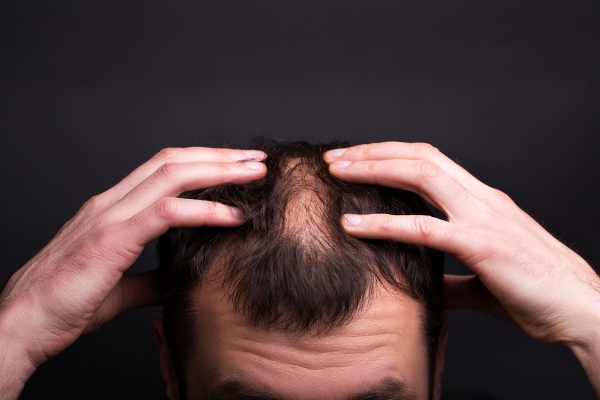What is Tinea Corporis?
Tinea Corporis, most commonly known as ringworm infection of the body, is a common fungal infection characterised by lesions, either inflammatory or non-inflammatory in nature affecting the skin (excluding the scalp, groin, palms and soles). The name ringworm is due to the characteristic appearance of the lesions, and no actual worm is involved in the disease. Tinea corporis is closely related athlete’s foot (tinea pedis), jock itch (tinea cruris) and ringworm of the scalp (tinea capitis).
It is a common infection that arises mostly in hot and humid climates. The most common fungus that causes tinea corporis is Tinea rubrum. It accounts for more than 47% of the cases. Tinea corporis occurs in both men and women, and is more likely to occur in women of childbearing age. It can also arise in anyone of any age group. However, its prevalence is highest among preadolescents. Children tend to catch the infection from infected animals, as the disease can also occur in them.
What causes Tinea corporis?
Tinea corporis is caused by a fungus, most commonly Tinea rubrum. The fungus can be caught from a variety of sources. It can be transmitted through direct skin-to-skin contact among people. The disease can also be transmitted from infected animals or soil. In the United States, the most common source of infection is infected humans. Furthermore, transmission can occur through contaminated household pets, animals from farms and fomites such as contaminated hair brushes, towels or clothes.

The fungus mostly loves the non-living, superficial layer of skin for its warm and moist environment. This is ideal for the proliferation of the fungal infection. The fungus usually does not invade deeper skin structures. You may start having symptoms of the infection after 1-3 weeks from the initial contact with the fungus. The infection spreads on the skin in a circular pattern with an active border spreading further. It then sheds the infected skin to leave new healthy skin central to the spreading active border, known as central clearing.
What are the risk factors for Tinea corporis?
You are at increased risk of having Tinea corporis if you:
- Live in a warm and humid environment
- Have close contact with someone or an animal having the same disease
- Participate in activities involving direct skin-to-skin contact with other individuals such as certain sports
- Have a weakened immune system
- Wear tight clothing
- Share clothes or towels with an infected individual
What are the symptoms of Tinea corporis?
Some people may not have any symptoms despite having the infection. However, most people present with a characteristic skin lesion in the form of a circular plaque. The lesion is itchy and can be associated with a burning sensation. In people with a weak immune system, severe itchiness and pain is usually present.

The lesion in tinea corporis usually starts as a red plaque, with some scales that rapidly worsen and spread. The annular appearance of the lesion is due to healing of the skin central to the active border.
How is the diagnosis of Tinea corporis made?
To make the diagnosis of tinea corporis, your doctor will start by asking you a series of questions, focusing on any possible contact with the infection. He/she will proceed with a physical examination. Your doctor will have a close look at the lesion. Most of the time, the diagnosis of tinea corporis is made only through a history taking and physical examination, given its characteristic appearance. However, if the diagnosis if doubtful, further tests may have to be done.
A potassium hydroxide (KOH) test is usually helpful to make the diagnosis. In this test, the lesion is scraped and the obtained sample is placed on a microscope slide with some KOH solution. The slide is prepared in a particular way and observed under the microscope. The fungus is then identified.
Another test may include skin biopsy in which a special tool is used to obtain a sample of skin which is also observed under the microscope after a specific preparation.

How is tinea corporis treated?

Tinea corporis generally responds very well to medications. Topical treatment is usually recommended and effective in the management of tinea corporis. They are usually applied to the lesion and at least 2 cm beyond the active border once or twice a day for a minimum of 2 weeks, depending on the medication used. Examples of topical medications used include topical azoles (for example: econazole, ketoconazole, clotrimazole, miconazole, oxiconazole, sertaconazole and sulconazole) and allylamines.
Oral medications are reserved for extensive disease where a large area of skin is involved. It is also recommended in people with a weak immune system as well as those in which the lesion is resistant to antifungal topical therapies.
How can Tinea corporis be prevented?
Spread of tinea corporis may be prevented by:
- Avoiding close contact with infected individuals or non-infected individuals if you have the disease
- Avoid sharing of towels, clothes, hats or hair brushes
- Wear loose-fitting clothes made of cotton
- Avoid contact with infected animals
What is the prognosis of Tinea corporis?
Around 70-100% of people with the disease eventually get better with appropriate treatment, that is, topical azoles or allylamines. Skin fungal infections do not usually result in death but can impose a great toll on the quality of life of the person affected. The prognosis is excellent for localized tinea corporis.


Source:
Shukla, S., 2020. Tinea Corporis
Leung AK, Lam JM, Leong KF, Hon KL. Tinea corporis: an updated review. Drugs Context. 2020. 9
Adams BB. Tinea corporis gladiatorum. J Am Acad Dermatol. 2002 Aug. 47(2):286-90.
Yee G, Al Aboud AM. Tinea Corporis. StatPearls [Internet]. 2020 Jan.





